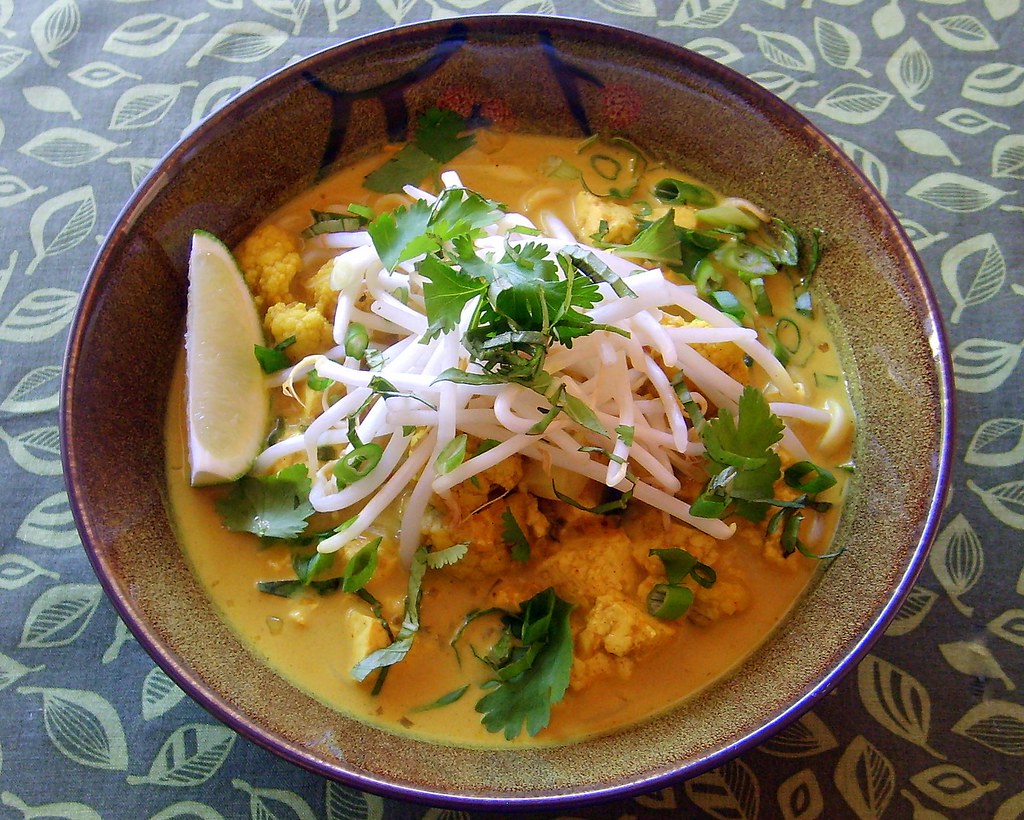Embark on a culinary journey through the vibrant flavors of Malaysia with our in-depth exploration of the beloved coconut curry. This delectable dish, a symphony of aromatic spices and creamy coconut milk, has captivated taste buds worldwide. Join us as we delve into the intricacies of its preparation, regional variations, and the perfect accompaniments to elevate your dining experience.
From the tantalizing blend of curry paste to the vibrant array of vegetables, each element of this dish plays a harmonious role. Let us guide you through the art of creating an authentic Malaysian coconut curry, promising a culinary adventure that will leave you craving for more.
Ingredients
The foundation of a traditional Malaysian coconut curry lies in a harmonious blend of essential ingredients, each contributing to the dish’s distinctive flavor and aroma.
Coconut milk, the cornerstone of the curry, lends a rich, creamy texture and a subtle sweetness that balances the spice. Curry paste, a flavorful mixture of herbs, spices, and aromatics, provides the aromatic backbone of the dish, adding depth and complexity to the overall taste profile.
Aromatics
Aromatics, such as onions, garlic, ginger, and lemongrass, play a crucial role in enhancing the flavor of the curry. Onions provide a sweet, caramelized base, while garlic and ginger add a pungent, earthy note. Lemongrass, with its citrusy aroma, adds a refreshing and invigorating touch to the dish.
Vegetables
A variety of vegetables can be incorporated into the curry, adding color, texture, and nutritional value. Common choices include potatoes, carrots, bell peppers, and green beans. Each vegetable contributes its own unique flavor and texture, creating a harmonious balance within the dish.
Cooking Method

Preparing a delectable Malaysian coconut curry involves a meticulous process that begins with crafting the flavorful curry paste from scratch. This aromatic blend forms the foundation of the dish and infuses it with an irresistible symphony of spices.
Preparing the Curry Paste
- In a mortar and pestle or food processor, combine dried red chilies, coriander seeds, cumin seeds, turmeric powder, lemongrass, galangal, and garlic. Grind until a smooth paste forms.
- Add shallots, onions, and ginger and continue grinding until they are finely incorporated.
- Finally, add toasted coconut and blend until the paste becomes fragrant and aromatic.
Sautéing the Paste
To release the full potential of the curry paste, sauté it in hot oil until it turns aromatic and deepens in color. This step allows the flavors to bloom and develop, creating a rich and flavorful base for the curry.
Simmering the Curry
Once the paste is sautéed, add coconut milk and simmer gently. As the curry simmers, the coconut milk will infuse the paste with its creamy texture and mellow the spices. Simmer until the curry reaches the desired consistency, stirring occasionally to prevent scorching.
Variations and Adaptations

The Malaysian coconut curry recipe exhibits regional variations, each boasting unique flavors and ingredients. These variations reflect the diverse cultural influences that have shaped Malaysia’s culinary landscape.
Across different regions, various types of curry pastes are employed to create distinct curry profiles. For instance, in the northern states, the use of aromatic rempah (a blend of spices) results in a rich and spicy curry paste. In the central regions, the incorporation of turmeric and lemongrass imparts a vibrant yellow hue and a tangy flavor to the paste.
Dietary Adaptations
To cater to dietary restrictions or preferences, the Malaysian coconut curry recipe can be easily adapted. For individuals with seafood allergies, fish sauce can be substituted with soy sauce or vegetarian oyster sauce. For those seeking a vegan option, dairy products can be replaced with plant-based alternatives, such as coconut milk or almond milk.
To reduce the spice level, adjust the amount of chili peppers or add more coconut milk to balance the heat.
Serving Suggestions
Malaysian coconut curry is a versatile dish that pairs well with various accompaniments. Here are some traditional and modern suggestions to elevate your dining experience:
Roti Canai, Naan, or Rice
Roti canai, a Malaysian flatbread, and naan, an Indian flatbread, are classic choices for soaking up the rich curry sauce. Alternatively, fluffy white rice provides a neutral base to balance the flavors.
Garnishes and Condiments
Fresh herbs like cilantro, mint, or basil add a burst of freshness and color to the dish. A squeeze of lime juice brightens the flavors, while chopped peanuts or fried shallots provide a satisfying crunch. For a spicy kick, serve with a dollop of sambal or chili oil.
Conclusion
As we conclude our exploration of the Malaysian coconut curry, we hope you have gained a newfound appreciation for its rich flavors and versatility. Whether you choose to savor it with traditional accompaniments or adapt it to your dietary preferences, this dish promises to tantalize your taste buds and leave a lasting impression.
Embrace the culinary heritage of Malaysia and let the aromatic delights of coconut curry transport you to a world of gastronomic wonders.
FAQ Section
What are the key ingredients in a traditional Malaysian coconut curry?
The essential ingredients include coconut milk, curry paste, aromatics like onions, garlic, and ginger, and a variety of vegetables such as potatoes, carrots, and green beans.
How can I adapt the recipe to my dietary restrictions?
The recipe can be easily adapted to accommodate dietary restrictions. For a vegan version, substitute vegetable broth for chicken broth and use plant-based coconut milk. Gluten-free options include using gluten-free curry paste and serving with rice or quinoa instead of roti canai or naan.
What are some regional variations of the Malaysian coconut curry?
Regional variations exist, each with its unique blend of spices and ingredients. Northern Malaysian curries tend to be spicier, while southern curries have a milder flavor profile. Some variations include the addition of pineapple, tamarind, or even durian.
